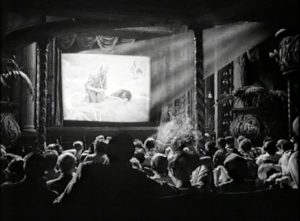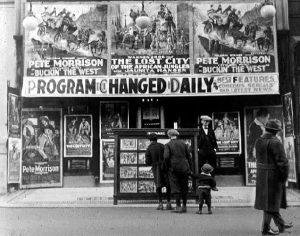Introduction
This text is a work in progress, begun for this English 2263 class early in the strange time of pandemic. So much has changed for all of us in the past couple of years. Perhaps no major industry has been as wholly impacted as greatly as film. Theaters were largely shuttered for a year, productions across the world were stalled, and major blockbusters are still sitting unreleased on studio shelves or were released directly to Internet streaming services such as Netflix and HBO. While it remains unclear what the production, distribution, and exhibition of film will look like in the years to come, it is absolutely certain that everything will be very different from what it was before March 2020. Four years later, the changes have not slowed down.
That said, we can be sure film will survive, despite the widespread predictions of its imminent demise. Modern-day Cassandras have been prophesying the end of film since its very beginnings in the late nineteenth century. And in one way, at least, these doomsayers have been right: film is forever reinventing itself, such that what we watch and how we watch it today is in many respects a completely different thing than it was a century or even a generation earlier. As we will discuss in future weeks, the very thing we still call “film” today only very rarely exists on a medium properly called film. Further, where for a century we watched films primarily in shared theatrical spaces, sitting in the dark with strangers, today we watch the majority of our films on smaller screens at home with friends and family—or alone on mobile screens that reside always close at hand.
 |
 |
When film first appeared at the end of the 19th century it was considered a fad—a technical wonder to be sure, but nothing that would sustain interest once the “magic” of projection lost its luster. When sound arrived in 1927, it was unclear whether an industry that had developed around silent production and performance styles could adapt—or how the nation’s theaters could convert to meet the demand for the new technology of synchronized sound. When television arrived two decades later, it was widely believed that—coupled with the massive movement of white middle-class residents out of the cities and into new post-war suburbs—movie theaters would cease to exist and with them the studios that not only depended on exhibition but owned the theaters themselves. The fact that the Supreme Court in 1948 declared this practice of production studios owning the means of exhibition to be an illegal monopoly only made the situation for the film industry seem even more dire. In each of these cases what followed was a period of reorganization and experimentation before a new filmmaking (and film-watching) system came into being. In the case of the post-1948 Hollywood, for example, the studio system would eventually be replaced—after a period of fascinating experiments and maverick directors—by the blockbuster Hollywood of the 1980s. In the late 1990s and early 2000s, the rise of the Internet and the fast-growing popularity of video games once again seemed to bode an end to film as we know it. As we all know, however, film adapted once again, by going both Big (the rise of the superhero movie, which continues to dominate box offices twenty years later) and Small (new microbudget digital filmmaking, providing a platform for new voices and approaches).
Despite the madness of our current moment, there is no question film will survive. And there is no question film will be transformed, as it has in each of the crises it has faced in the past. But whether movies are projected in large theaters, or watched on a iPhone; whether they are produced, distributed, and exhibited digitally, or filmed and projected on traditional filmstock; whether they are produced with a crew of hundreds and budgets of $300 million, or made by a dozen people on credit card debt, the ways in which we analyze and make meaning of films remains largely universal. The chapters, class sessions, and conversations to follow are designed to give us tools, terms, and methods to make meaning out of any movie, and much of what we explore here will translate relatively easily to the study of other visual narrative media, including television, narrative video games, web videos, and even some aspects of comics.
As terms are introduced, they will be highlighted and linked to a glossary. Each chapter will also include prompts which you will be asked to discuss with your recitation groups. And, unlike the usual textbook, this one comes (in addition to the inevitable typos from an early) with living, breathing resources close at hand in the form of its author, your prof (me)—not to mention your recitation instructor. Call on us any time for anything that doesn’t make sense. In doing so, you are also helping me improve the text to make it clearer and more useful.
Here is to a semester of movies and the conversations, debates, and discoveries they inspire!
Jared Gardner, August 2024
- Nickelodeon 1908
- Multiplex 1977
Media Attributions
- bijou-screening
- netflix-on-macbook-unsplash


